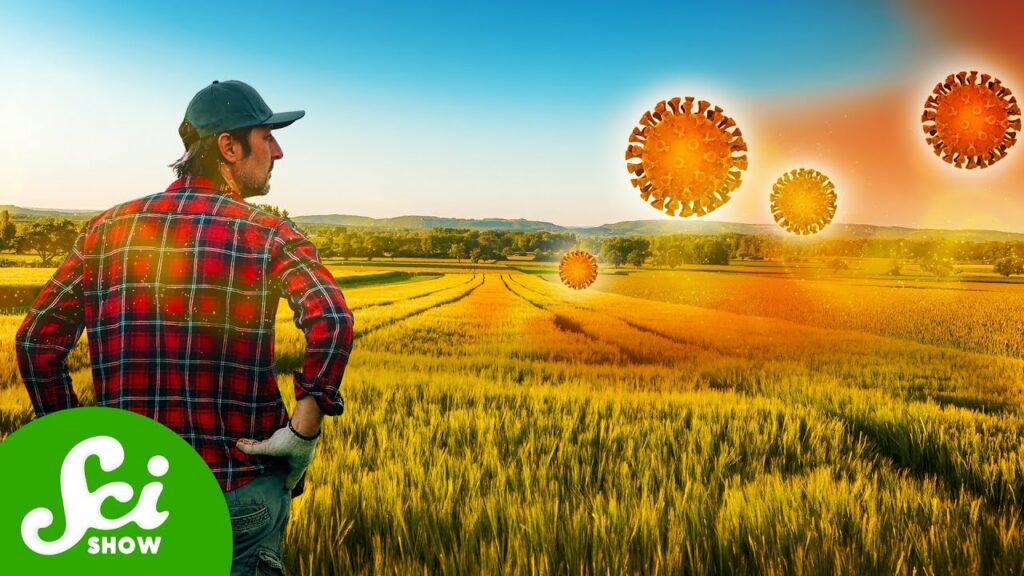Wheat has been a staple in our diet for thousands of years. Since humans first planted it 10,000 years ago, wheat has grown to be the most widely cultivated crop in the world. Today, it makes up about one-fifth of our total calorie intake. However, a serious threat looms over this essential crop: fungus.
The Threat of Wheat Rust
Fungal rusts are the biggest enemies of wheat. These nasty fungal parasites create reddish-orange spots on plants that look like rust. They spread through tiny spores carried by the wind. When these spores land on a wheat plant, they latch on and suck up the nutrients that the plant needs to grow. If the infection is severe, it can kill the plant in just one month. This has been a problem for wheat farmers for ages, with reports of rust epidemics dating back to ancient times.
These outbreaks can disrupt the food supply, leading to shortages and rising prices. This is particularly concerning for regions like the Global South, already grappling with issues like droughts. With climate change making crops more vulnerable to disease, rust poses a significant challenge.
Historical Attempts to Combat Rust
Farmers have tried various methods to tackle wheat rust for many years. For instance, after a devastating rust outbreak in 1916, the U.S. initiated a long campaign to eliminate barberry, a plant that could host the fungus. But even the best precautions may not be enough, as fungal spores can travel far distances, making it hard for farmers to predict an outbreak.
One solution is to breed new, disease-resistant wheat varieties. Agronomist Norman Borlaug, known for his work in this area, even won a Nobel Peace Prize for saving millions from starvation. However, breeding takes time, and farmers need quick solutions to manage rust outbreaks.
Developing an Early Warning System
To address this gap, scientists have begun creating an early warning system for wheat rust. Ethiopia, often considered the breadbasket of sub-Saharan Africa, has faced multiple rust outbreaks since 2010. Farmers there can use fungicides to protect their crops, but the supply is limited, making timing crucial.

Researchers created a system that does the following:
- Collects Information: It gathers data from experts in the field and local farmers.
- Makes Predictions: Using computer simulations and weather data, it forecasts where spores may travel and grow.
- Shares Alerts: It sends out alerts to farmers, sharing critical information on when and where to use fungicides.
This innovative system acts like a weather forecast, but for fungal threats, dubbed “fungusstorms.” In 2017 and 2018, over 200,000 smallholder farmers received alerts, allowing them to take preventive action.
Extending the System to Nepal
The success of the Ethiopian system led researchers to adapt it for use in Nepal. Gathering data from farmers can be challenging, so the team also used online media reports from India and Pakistan to help identify early sources of infection. This approach has proven effective; it successfully detected rust outbreaks in 2020 by tracking long-distance spores.
The Future of Wheat Protection
Technological advancements continue to enhance crop protection efforts. One promising direction is teaching computers to recognize wheat rust. Farmers could simply upload a picture of their crops, allowing for faster identification of potential outbreaks without waiting for experts to arrive.
These efforts help farmers become more resilient against the threats posed by climate change and disease. While rust may have been around as long as wheat itself, modern technology offers hope in safeguarding the world’s food supply.
The challenges facing wheat production due to rust are significant, but science is paving the way for solutions. With systems that provide early warnings and the potential for automated detection, farmers are becoming better equipped to protect their crops. In a world where one-fifth of our food depends on wheat, fighting rust is not just an agricultural issue—it’s a matter of global food security.




GIPHY App Key not set. Please check settings